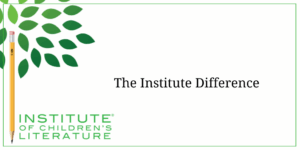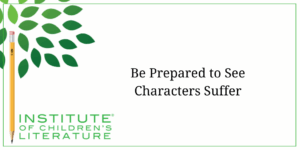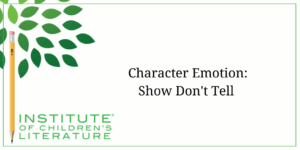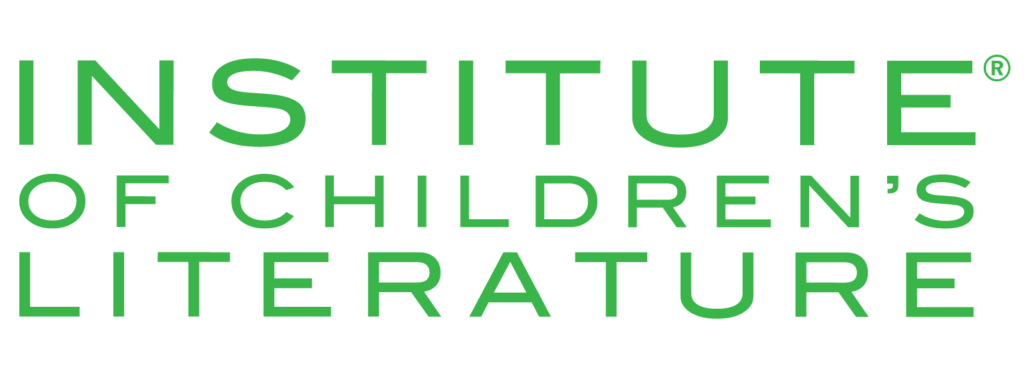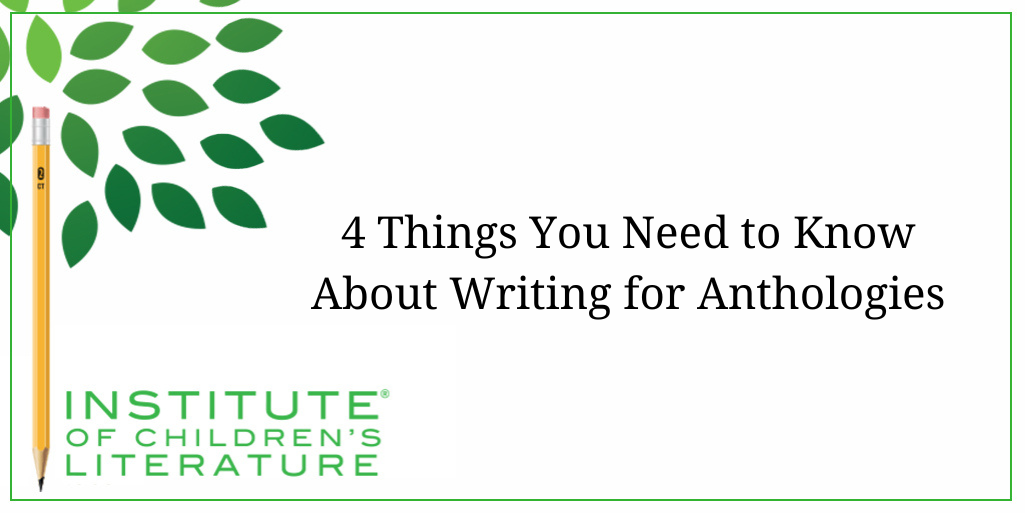
- Date: January 9, 2025
- Author: Jan Fields
- Category: Writing for Children Blog
- Tags: anthologies, genre, writing
We teach our students how to write and get published!
View our Course Catalog >
4 Things You Need to Know About Writing for Anthologies
Short story writing is often connected with magazine publishing. Unfortunately, the number of magazines accepting fiction has grown smaller in the last decades. And those who pay for the stories tend to be fewer still. This is where short story anthologies can come to the rescue. There are hundreds of anthologies published every year, and they need stories. This makes them a good place for writers, especially writers looking to build their publication credits. Therefore, it's helpful to understand how anthologies work, and what they are.
For the most part, short story anthologies are books filled with poetry, essays and/or short stories (and sometimes a novella or two), all by different authors. What ties all the stories together is normally a theme of some sort, and (most of the time) a genre. Anthologies are often genre projects. There are many horror anthologies every year. The same is true of science fiction and fantasy anthologies. Sometimes you'll see mystery anthologies, though these are far less common. There are literary anthologies and even essay anthologies (the Chicken Soup for the Soul anthologies have been first publication experiences for many of our readers.)
So, what do we need to know about anthologies? 
Broader Range of Options
Short stories in print magazines are often really short. This is because the story is competing with so many other regular features for space. But book-length anthologies nearly always offer writers room to spread out. It's not unusual for short story collections to have word count ranges as wide as 1000 to 20,000 words. This is because they know readers love to have options: quick stories when they are in a hurry and longer tales when they want to settle down for a while. This can be a real pleasure for writers who struggle to master the tight word counts common in children's literature.
Now, one thing we should recognize: most anthologies are not for children. Most collections are for adult readers, but as they are often genre (horror, science fiction, fantasy, etc.) they also want to appeal to young adult readers. Guidelines almost never specify they are for teens, but most are aware that teens are a huge part of their readership. Because of this, many have specific rules about gratuitous violence, sex, and even foul language.
Because some collections are really not for young people, it's good to read the guidelines carefully before considering submission. If your story is accepted, will you be comfortable with it keeping company with some adult content?
Themes As Writing Prompts
 One of the things I love most about anthologies are the themes. Most anthologies are themed. And the themes can be interesting and thought provoking. Writing to a theme makes you look at ideas, experiences, and plots in new ways. If I see a theme requesting stories that are both ghost stories and historical fiction, for example, I'll brainstorm ideas that feel “outside of the box.” In any anthology, the best chance of selling the story is if your interpretation of the idea is unusual or interesting. Standing out is a good thing.
One of the things I love most about anthologies are the themes. Most anthologies are themed. And the themes can be interesting and thought provoking. Writing to a theme makes you look at ideas, experiences, and plots in new ways. If I see a theme requesting stories that are both ghost stories and historical fiction, for example, I'll brainstorm ideas that feel “outside of the box.” In any anthology, the best chance of selling the story is if your interpretation of the idea is unusual or interesting. Standing out is a good thing.
So historical fiction horror, what might I do with that? I could write about a ghost who saw the lantern light from the Old North Church and joined in spreading the alarm, waking every ghost in every village and farm, rallying them to help with the coming Red Coats. Or maybe I like the idea of the ghost who shoved John Wilkes Booth, so that his escape is foiled by a bad landing and a broken leg. Or maybe I'm the ghost who led a small group of escaped enslaved people to freedom when they'd become lost in a swamp.
Coming up with interesting story ideas sharpens my creative skills, even if I don't end up contributing to the anthology at all. My historical ghost story might not work because it’s too kid focused, but maybe it turns into an exciting middle grade novel instead. Sometimes, using themes as story prompts can have unexpected results.
Pay Can Vary
The first thing to know is that not all anthologies pay. Some promise to pay if the anthology is fully funded through a Kickstarter—which means it might not happen at all.
Some collections pay royalties only, which are a small percentage of the cover price divided among all the writers involved. This almost always means very little money, or none at all, for the writers who contribute. It also puts a lot of pressure on the writers to do all the promotion for the anthology in order to get any money from it at all.
As a result, royalty-only anthologies should be considered only if you really loved the theme, and you really want to see a story in print, but you don't mind if you never see any money from it. 
Some collections pay a flat fee (often a penny a word or something in that vicinity, and often with a maximum possible pay threshold, which can mean your pay per word is lower). Some offer a flat fee plus royalties. Some anthologies pay a flat fee that isn't tied to word count. The Chicken Soup anthologies, for example, pay $250 for each essay published in one of the books. Some anthologies will pay through PayPal or a similar service rather than sending paper checks through the mail. Some “pay” only in author copies.
For the most past, people don't write for collections to make a lot of money. They write for anthologies to build their publishing credits in a particular genre, and to build name recognition among fans of the genre. Both can make selling a novel easier as long as it is in the same genre as the anthologies.
Sometimes Buys Poetry
The most common collections buy short stories or essays. But many are also open to poetry as long as it is tied to the anthologies theme. If the anthology pays in “royalties,” the poets may make the same amount as the essay writers or short story writers. If the anthology pays a flat fee, poetry is usually paid less. Partly this is because short stories and essays may be paid per word. So, if an anthology pays 2 cents per word, poetry could end up making nothing at all.
Anthologies will often offer a per word fee for short stories and essays and a flat fee for poetry. The flat fee is usually on a scale from about two dollars to around twenty dollars per poem. It really depends upon what the publisher expects to make from publishing the collection.
If you like genre writing and you want to try something different this year, you ought to consider an anthology. They can be a great place to stretch your skills and build your publication credits. And that's always a good thing.
Related Articles for Anthology Writing
With over 100 books in publication, Jan Fields writes both chapter books for children and mystery novels for adults. She’s also known for a variety of experiences teaching writing, from one session SCBWI events to lengthier Highlights Foundation workshops to these blog posts for the Institute of Children’s Literature. As a former ICL instructor, Jan enjoys equipping writers for success in whatever way she can.

